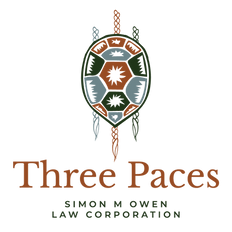Like most people, I spent Sunday afternoon pouring over the Supreme Court’s ruling on the federal government’s Indigenous child welfare law (somehow Taylor Swift is not mentioned once). There are several good summaries of the case out there – this post isn’t a comprehensive account, but my initial digestion of the decision’s doctrinal delicacies. In upholding a law whose primary intent is to ensure that Indigenous families and communities are legally capable of caring for their own children (the denial of which was the very heart of colonialism), the Court perused a smorgasbord of some of federalism’s hottest topics:
· Does the ‘double aspect doctrine’ apply to legislation that both the federal and provincial governments may constitutionally make? (Yes!)
· Can the federal government referentially incorporate Indigenous laws to give them the force of its own statutes, and assert that such laws prevail over conflicting provincial ones by virtue of the doctrine of ‘federal paramountcy’? (Yes!)
· Does the Act’s declaration that aboriginal rights include self-governance over child and family services unilaterally amend the Constitution? (No!)
As such pointy-headed dictums indicate, this decision is squarely about Canadian (Aboriginal/constitutional) law – namely, the space that such law affords for a certain subset of Indigenous lawmaking (legislation) in a certain area (child and family welfare). While the Act itself sets out some standards and guardrails regarding the content of these laws ( principally regarding the best interests of children in cultural contexts), the decision does not – nor could it – touch the substance of Indigenous laws themselves.
While sowing slight confusion (I heard one news reporter say that the case “establishes inherent rights”), all in all this is a win for equity, respect and reconciliation in the interpretation of the Constitution, the implementation of the UN Declaration and the relationship between Crown and Indigenous governments. The decision affirms that Crown governments can boldly progress along this road without wrangling over the final wording of treaties, or pushing multi-year, multi-million-dollar court cases to their agonizing conclusions. They can just go ahead and make good laws, laws that truly, finally recognize that the health and well-being of Indigenous Peoples is always co-determinant with the vitality, integrity and authority of Indigenous laws and ways of governance. There are thousands of ways to grow better in this regard, and this decision is absolutely an encouraging place to (re)start from.
If there is one cloudy lining to this silver platter, it is in the Court’s refusal to go ahead and conclusively protect the recognition upon which this Act is based: that the right to self-government is an essential part of our Constitution that can be relied on by Indigenous Peoples as they rebuild their own laws. This may be too much to expect from an institution that works in increments and only answers the questions it is most explicitly asked, but the ruling leaves a disturbing imbalance in place. As some critical commentary points out, the Court based its reasoning not on the inherent right of Indigenous self-government, but the constitutional right of the federal order of government to pass laws that (albeit in a limited sense) uphold it. Yet the unstated flipside of upholding a Crown government’s ability to make good laws is affording future governments the latitude to make bad ones, ones which may again seek to narrow the aperture of Indigenous self-governance.
This is a worry for another day. But for now, in this one crucial, beautiful, essential area of legislating in respect of children, Canada has finally recognized what Indigenous communities have always had and always needed: the right to (re)build strong frameworks of love and care around young ones and families, frameworks informed by Indigenous kinships, Indigenous wisdom and Indigenous laws. It is an opening that we need to safeguard, support and help expand.

Comentários